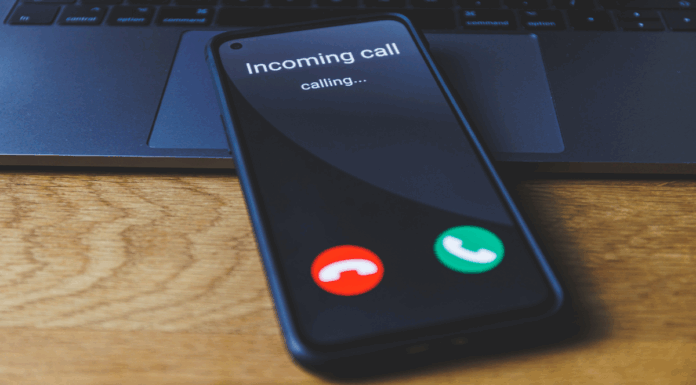Eighty-four percent of all call traffic between top U.S. telecom providers was signed and verified using STIR/SHAKEN protocols in the first half of 2025
Through a combination of policy momentum, IP modernization and real-time analytics, key telecom industry stakeholders — carriers, technology providers, and regulators — are reshaping how voice fraud is identified, mitigated, and prevented. Eighty-four percent of all call traffic between top U.S. telecom providers (Verizon, UScellular, T-Mobile, Lumen, Comcast, Charter, and AT&T) was signed and verified using STIR/SHAKEN protocols in the first half of 2025.
It’s evident that the telecom industry has made significant progress since the passage of the TRACED Act and the subsequent implementation of STIR/SHAKEN protocols. Yet, there are roadblocks to reaching a fully operationalized STIR/SHAKEN environment. Despite the strong signed call traffic metrics, Tier-1 operators have plateaued at this rate of signed traffic since 2023, due to call signing challenges stemming from stagnation in IP adoption among non-top operators.
The telecom industry faces another pivotal inflection point, as bad actors continue to hide unwanted traffic in operators’ networks. For that reason, all stakeholders must continue to advance efforts and cost-effective technologies to facilitate migration to IP networks.
2020 Robocall Crisis and the TRACED ACT
The 2019 pre-pandemic peak of 106.9 billion robocalls that year pushed the telecom industry to take aggressive action against scam calls.
For robocall bad actors, buoyed by cheap VoIP technology and international scam operations, the 2010s were the Wild Wild West. No regulation required carriers to block calls by default or authenticate caller ID. The FCC could only fine violators after issuing a warning, while many robocall bad actors operated offshore or used fake identities. Additionally, the FTC’s Do Not Call list was ineffective due to a lack of enforcement tools.
Relief came in the form of the 2019 Telephone Robocall Abuse Criminal Enforcement and Deterrence (TRACED) Act. Signed into law by President Trump on December 30, 2019, the pro-consumer, pro-privacy bill has been a success.
Robocall volume is down as top carriers have migrated their networks to IP, implemented the STIR/SHAKEN protocols, and established SIP-to-SIP connections. At the same time, consumer awareness of robocalls and their willingness to report scam attempts has increased. Recent survey data shows 43% of people lodged complaints about unwanted robocalls, up from 28% two years ago. In the last 12 months alone, nearly half of all voice customers have submitted a robocall complaint to the authorities.
While challenges persist, the path forward is clear: advance, adapt, and collaborate.
Four priorities to strengthen call authentication and consumer trust
To maintain, preserve, and quicken the progress stemming from the TRACED Act, and ensure the telecom industry gets the most out of STIR/SHAKEN authentication, carriers, regulators, and technology providers must address key vulnerabilities that threaten Americans’ trust in the voice channel.
TNS’ Half-Year 2025 Robocall Report identified four critical challenges essential for fortifying call authentication, combating fraud, and enabling a fully trusted voice network.
1. Bridge the Signing and Connectivity Divide In The Telecom Industry
Many smaller carriers have faced significant challenges in digitally transforming their networks to IP to comply with STIR/SHAKEN standards. Robocall bad actors target these operators, hiding unwanted and unsigned traffic amongst these networks.
To help these smaller carriers, the FCC introduced a recent Notice of Proposed Rulemaking (NPRM), which aims to close the non-IP network gaps that scammers have aggressively exploited to bypass STIR/SHAKEN. Technology providers and telecom industry leaders should follow the FCC’s lead and continue to develop cost-effective solutions to facilitate network migration and strengthen defenses against robocall bad actors.
2. Improve the Integrity of Call Attestation Across All Operators
While STIR/SHAKEN protocols enhance call signing, it does not verify the attestation level assigned to each call. Scammers have exploited this loophole through a series of invalid attestation scams, where calls originating from invalid or spoofed numbers maintain an “A” attestation. A recent data sampling from TNS shows that out of the 585,000 calls placed using invalid telephone numbers, 340,000 were signed with an “A” level attestation, many of which originated from within Tier-1 networks.
Invalid attestations highlight a limitation of STIR/SHAKEN and underscore the need for stronger call signing and attestation frameworks, like the FCC’s recent NPRM, to be implemented.
3. Close Authentication Gaps Within Trusted Networks
In addition to invalid attestation, SIM boxing is another evolving robocall tactic. Bad actors have historically used SIM boxing attacks to exploit price disparities between local and international call rates. Recently, scammers have recognized that calls originating and terminating on the same network are inherently trusted and left unsigned. By leveraging multiple SIM cards, bad actors can launch robocall scam campaigns from overseas and conceal traffic within trusted networks.
To counter this, operators have sought to improve their call analytics algorithm by incorporating STIR/SHAKEN signature data into their models to better identify and block fraudulent calls.
4. Strengthen Defenses Against AI-generated Voice and Text Fraud
Scammers have quickly adopted generative AI technologies to launch sophisticated impersonation scams, making it difficult to determine whether the voice on the other end of the call is synthetic or that of a real person. Likewise, spoofed SMS messages that direct consumers to phishing sites have also become more realistic.
While the robocall mitigation ecosystem is stronger today than it was five years ago, it is also under greater pressure. AI has raised the stakes, further endangering Americans.
Ensuring the long-term success of STIR/SHAKEN and restoring trust to the voice channel requires a commitment from all telecom industry stakeholders to developing more innovative attestation practices, working together to modernize legacy networks, and deploying analytics platforms and advanced AI technologies to strengthen defenses against robocall bad actors.

